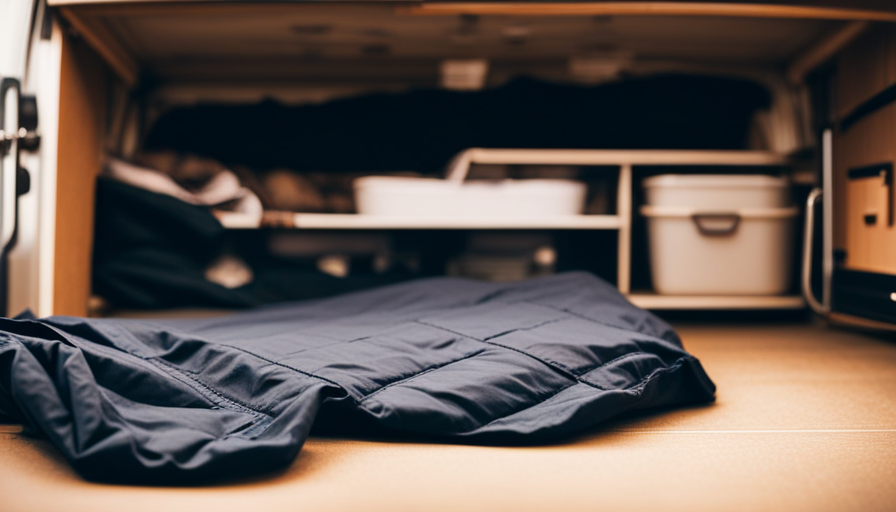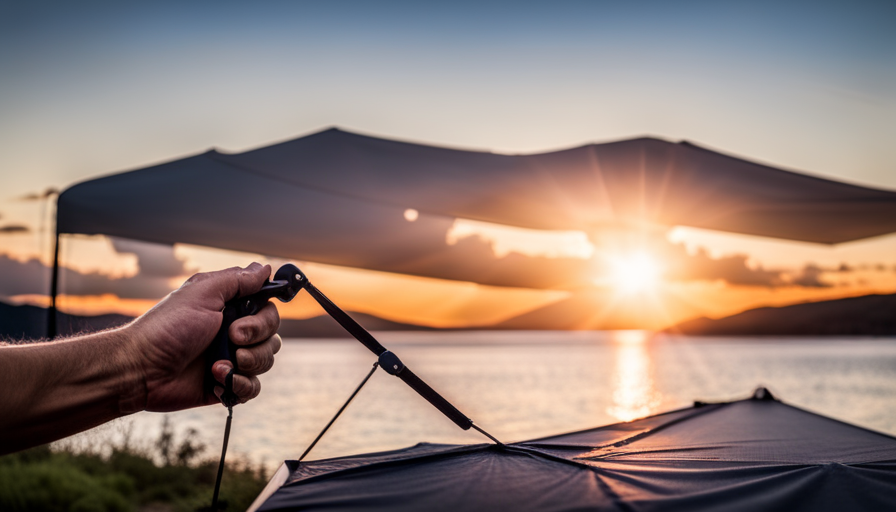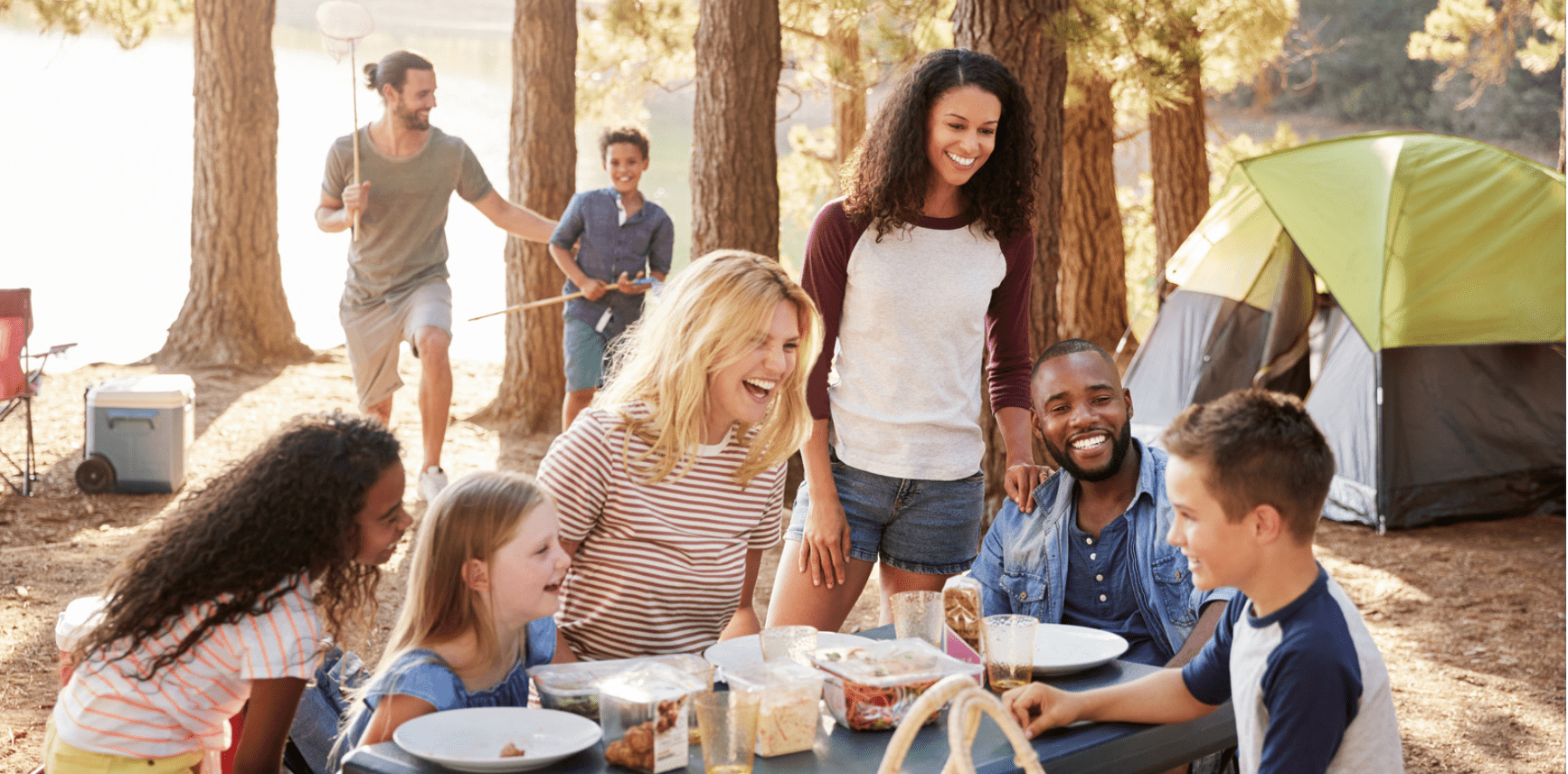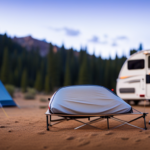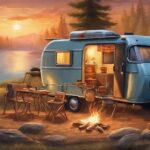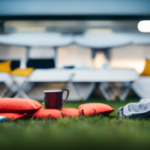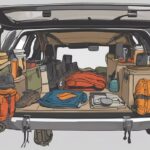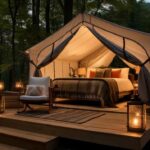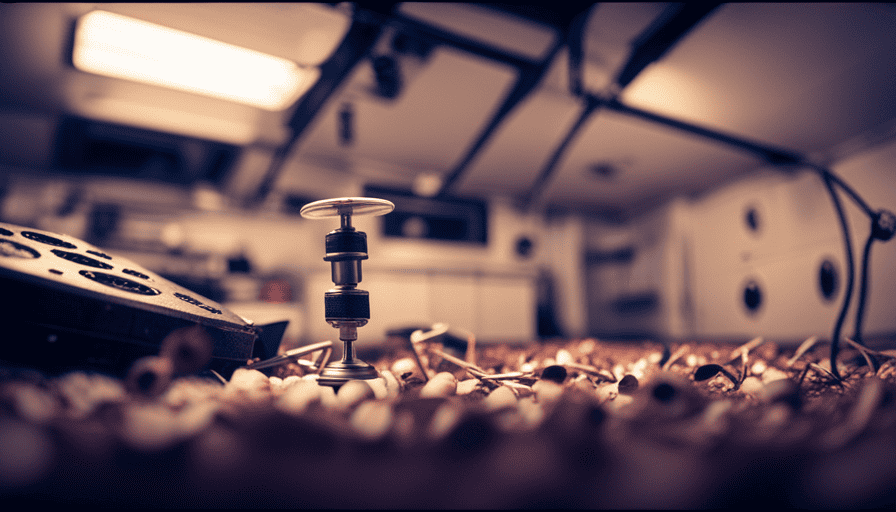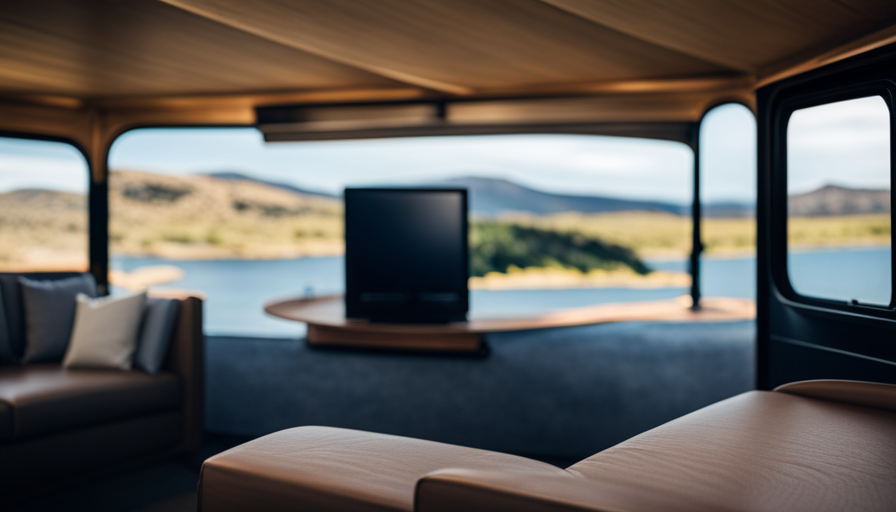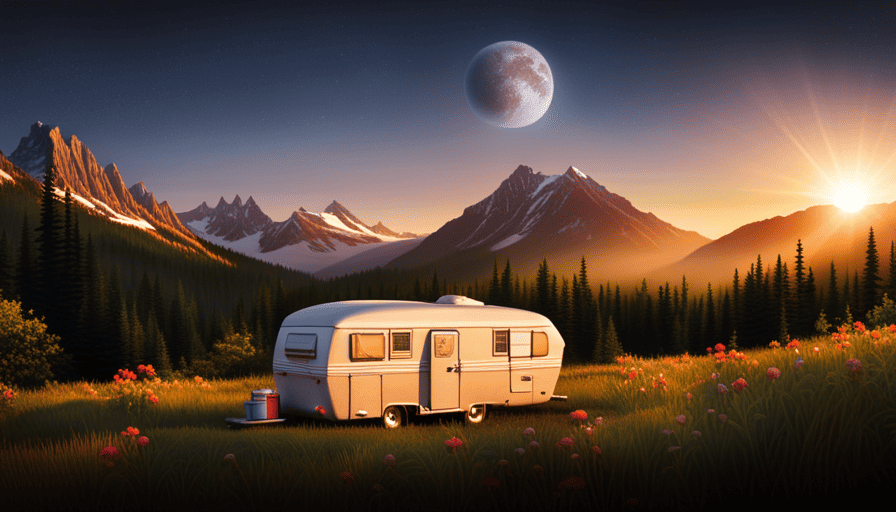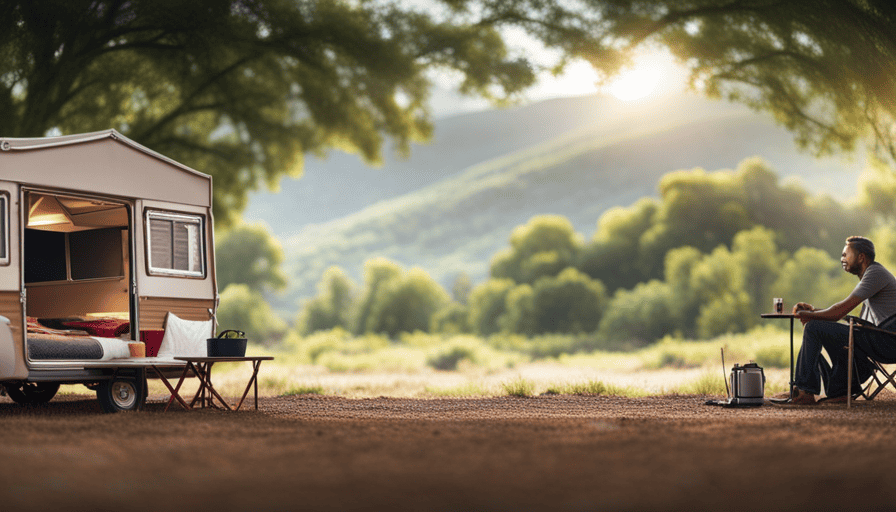Are you prepared to take to the highways for an adventure that you’ll always remember? Picture your camper as an empty canvas, ready to be packed with everything you need to make your trip enjoyable, easy, and thrilling.
Just like a painter carefully selects their colors and brushes, we too must carefully choose what to pack in our camper. It’s like creating a masterpiece on wheels, where every stroke of preparation contributes to the overall experience.
From the cozy bedding and linens that will cradle you to sleep, to the cooking utensils and supplies that will transform simple ingredients into delicious meals, we’ve got you covered. Don’t forget about the first aid kit and medications to ensure your health and well-being on the road, or the toiletries and personal care items that will help you stay fresh and confident.
As for clothing and footwear, pack wisely for changing weather conditions and various activities. And of course, no camper adventure is complete without the right camping gear – a tent, chairs, cooler, and more – to create your own little home away from home.
But it’s not all about practicality. Bring along some entertainment and recreational equipment to keep boredom at bay. And let’s not forget about maps and navigation tools to guide you through uncharted territories.
Lastly, don’t leave home without emergency supplies and tools, because when you’re out in the wild, it’s better to be safe than sorry.
So, are you ready to pack your camper and create your own masterpiece on wheels? Let’s dive in and discover what to bring on this incredible journey.
Key Takeaways
- Cozy bedding and linens for camper’s bed
- Plan meals in advance and bring basic spices and condiments
- Sturdy and waterproof tent
- Reliable cooler with insulation and tight seal
Bedding and Linens
Don’t forget to pack your cozy blankets and soft sheets to create the ultimate comfort oasis in your camper! When it comes to bedding options, there are a few things to consider. First, make sure to bring bedding that fits the size of your camper’s bed. Whether you have a twin, full, or queen-sized bed, having the right size sheets will ensure a snug fit and a good night’s sleep.
Additionally, pack a couple of extra blankets for those chilly nights or for added coziness during your afternoon nap.
Storage solutions are also important when it comes to bedding. Space is limited in a camper, so it’s essential to find ways to maximize storage. One option is to use vacuum storage bags to compress your blankets and sheets, saving valuable space in your camper’s cabinets or storage compartments. Another idea is to use under-bed storage containers to keep your bedding organized and out of the way when not in use.
Now that you’ve packed your cozy bedding and found storage solutions, it’s time to move on to the next section about cooking utensils and supplies. As you prepare to whip up delicious meals on the road, there are a few key items you won’t want to forget.
Cooking Utensils and Supplies
Remember to bring all the necessary pots, pans, and utensils for cooking in your camper. A well-stocked kitchen is essential for a successful camping trip. Whether you’re a gourmet chef or a beginner, having the right tools will make meal preparation a breeze.
When it comes to cooking techniques, you can grill your favorite meats and vegetables on a portable propane stove or over an open fire. Don’t forget to pack a cast iron skillet for those perfect breakfast pancakes or a Dutch oven for slow-cooked stews.
Planning your meals in advance will help you make the most of your supplies and avoid unnecessary trips to the store. Consider making a list of recipes and ingredients, so you have everything you need on hand. From simple one-pot meals to grilled feasts, the options are endless. And remember to pack some basic spices and condiments to add flavor to your dishes.
Now, let’s move on to the next important section about the first aid kit and medications.
First Aid Kit and Medications
Bringing a well-stocked first aid kit and necessary medications is crucial for ensuring the health and safety of everyone during your camping trip. When you’re out in the wilderness, accidents can happen, and having a first aid kit readily available can make all the difference. It’s important to have bandages, gauze, adhesive tape, antiseptic wipes, and tweezers. These items can help treat minor cuts, scrapes, and insect bites that are common during outdoor activities.
Additionally, including medications such as pain relievers, allergy medication, and anti-diarrheal medication can provide relief from unexpected discomforts.
Having a well-stocked first aid kit not only provides peace of mind but also enables you to handle minor injuries promptly. Knowing that you’re prepared to handle any mishaps allows you to fully enjoy your camping experience without worrying about potential accidents. It’s always better to be safe than sorry, and having a comprehensive first aid kit ensures you’re ready for any situation that may arise.
In addition to the first aid kit, packing essential medications is equally important. Consider any personal prescriptions or over-the-counter medications you and your camping companions may need. This includes medications for allergies, pain relief, and any chronic conditions. Double-check that you have an adequate supply for the duration of your trip.
Now that we’ve covered the first aid kit and medications, let’s move on to discussing toiletries and personal care items for your camper.
Toiletries and Personal Care Items
Having a well-stocked first aid kit and necessary medications is like having a safety net for unexpected mishaps during your camping trip. However, it’s equally important to pack toiletries and personal care items to ensure personal hygiene and comfort while on the road.
When it comes to bathroom essentials, pack travel-sized shampoo, conditioner, and body wash to keep you feeling fresh and clean. Don’t forget to include toothpaste, toothbrushes, and floss for maintaining oral hygiene.
In addition, pack hand sanitizer, wet wipes, and toilet paper to stay germ-free and prepared for any situation. Sunscreen and bug repellent are also essential items to protect your skin from harmful rays and pesky insects. For females, it’s important to pack feminine hygiene products as well.
As you transition into the next section about clothing and footwear, remember that comfort is key. Pack weather-appropriate clothing, including layers for fluctuating temperatures. Don’t forget sturdy shoes for hiking and exploring.
By having these essentials packed and ready, you’ll be well-prepared for any adventure that comes your way on your camping trip.
Clothing and Footwear
As you venture into the section on clothing and footwear, imagine yourself stepping into a world of comfort and style for your camping adventure. Outdoor activities call for the right attire, so pack wisely.
Start with a good pair of hiking boots that provide support and traction for those rugged terrains. Don’t forget to bring sturdy sandals for casual walks around the campsite or for water activities like kayaking or swimming. Comfortable and moisture-wicking socks are a must to keep your feet dry and blister-free.
When it comes to clothing, think layers. Pack lightweight, breathable shirts and pants for warmer days, and don’t forget a few long-sleeved options for cooler evenings. A waterproof jacket is essential in case of unexpected rain showers. Hats and sunglasses will protect you from the sun, while a cozy beanie will keep you warm on chilly nights. Remember to include swimwear, as well as a towel for those refreshing dips in the lake.
As you transition into the subsequent section about ‘food and snacks’, think about packing some quick-drying, lightweight clothes that will make your camping experience comfortable and hassle-free.
Food and Snacks
Get ready to tantalize your taste buds with an array of delicious food and snacks that’ll elevate your camping experience to a whole new level.
When it comes to food and snacks for your camper, it’s important to strike a balance between indulgence and health. While it’s tempting to load up on chips and cookies, incorporating healthy options into your meal planning can make a big difference.
Start by packing plenty of fresh fruits and vegetables that can be enjoyed as snacks or added to meals. Apples, carrots, and celery are great choices that require little preparation. Don’t forget to bring some protein-packed options like nuts, jerky, or canned tuna for a quick and energizing snack.
For meals, consider prepping some easy and nutritious recipes ahead of time. Mason jar salads, foil packet meals, and homemade trail mix are all great options. Don’t forget to pack some whole grain bread, peanut butter, and jelly for quick sandwiches.
As you transition into the subsequent section about camping gear, make sure to check your cooler and ensure it’s ready to keep your food fresh and cool during your trip.
Camping Gear (tent, chairs, cooler, etc.)
Don’t forget to bring your tent, chairs, and cooler to ensure a comfortable and enjoyable camping experience. Here are three essential items you should consider packing:
-
Tent: A sturdy and waterproof tent is essential for a successful camping trip. Look for one that’s easy to set up and provides enough space for everyone. Consider the number of people and the weather conditions when choosing the size and type of tent.
-
Chairs: Having comfortable chairs to relax in after a long day of exploring is a must. Look for lightweight and foldable camping chairs that are easy to transport and set up. Choose chairs with sturdy frames and breathable fabric for added comfort.
-
Cooler: A reliable cooler is essential for keeping your food and drinks fresh during your camping trip. Look for a cooler with insulation and a tight seal to prevent ice from melting quickly. Consider the size of the cooler based on the duration of your trip and the number of people.
In addition to these camping essentials, there are many camping gadgets and accessories available to enhance your outdoor experience. These include portable grills, lanterns, camping stoves, and more. These items can make cooking and lighting your campsite easier and more convenient.
Now, let’s move on to the next section about entertainment and recreational equipment.
Entertainment and Recreational Equipment
Make sure to bring along some fun entertainment and recreational equipment to keep everyone entertained during your camping trip! When it comes to outdoor games, it’s always a good idea to pack a frisbee, a football, or a volleyball. These games are not only a great way to bond with family and friends, but also to stay active and enjoy the beautiful surroundings.
Additionally, if you’re planning on camping near a river or a lake, don’t forget to pack some fishing equipment. Fishing is a relaxing and enjoyable activity that can be enjoyed by both beginners and experienced anglers alike. Just imagine the thrill of catching your own dinner!
Having these entertainment options will surely make your camping experience more enjoyable and memorable. After a long day of hiking and exploring, you can gather around the campfire and engage in some friendly competition with outdoor games. Or you can sit by the water’s edge, cast your fishing line, and enjoy the peace and serenity of nature.
Now that you have your entertainment covered, let’s move on to the next essential items for your camping trip: maps and navigation tools. It’s important to be prepared and have the necessary tools to navigate through the wilderness, ensuring a safe and successful adventure.
Maps and Navigation Tools
Having a reliable map and navigation tools is like having a trustworthy guide to lead you through the enchanting wilderness. When embarking on a camper trip, it’s essential to equip yourself with the necessary tools to navigate unfamiliar terrain.
GPS devices have become increasingly popular, offering accurate and real-time navigation information. These devices utilize satellite technology to pinpoint your location and provide step-by-step directions to your desired destination. Whether you’re exploring a national park or venturing off the beaten path, a GPS device can be a valuable asset.
However, it’s important not to solely rely on technology. Paper maps still have their place in the camper’s arsenal. They provide a broader view of the surrounding area and can serve as a backup in case of GPS malfunctions or loss of signal. Additionally, paper maps allow you to physically trace your route and mark points of interest along the way.
When it comes to navigation, having both GPS devices and paper maps ensures you’re prepared for any situation. With these tools at hand, you can confidently navigate your way through the vast and beautiful landscapes that await you.
As we transition into the section about emergency supplies and tools, it’s crucial to be prepared for unforeseen circumstances.
Emergency Supplies and Tools
Equipping ourselves with essential emergency supplies and tools is a wise decision to ensure preparedness for unforeseen circumstances. When we’re on the road in our camper, it’s crucial to be ready for any emergency situation that may arise.
One of the first items we make sure to pack is a well-stocked first aid kit. This includes bandages, antiseptic wipes, pain relievers, and any necessary prescription medications. We also bring along a fire extinguisher, just in case of a small fire.
Another important tool is a multi-tool, which can come in handy for various repairs or tasks. Additionally, we always carry a flashlight with extra batteries, as well as a portable phone charger. These items can be a lifesaver if we find ourselves stranded in the dark.
Lastly, we never leave without a roadside assistance kit. This includes items like jumper cables, a tire repair kit, and a reflective triangle. Being prepared for emergencies is essential for our safety and peace of mind while traveling in our camper.
Frequently Asked Questions
How do I choose the right size and type of camper for my needs?
When choosing the right size and type of camper for our needs, we need to consider several factors.
First, we should think about the number of people who’ll be using it and how much space we’ll need.
We should also consider the type of camping we’ll be doing, whether it’s off-grid adventures or staying at campsites.
Different camper types, such as pop-up campers or motorhomes, have their own pros and cons.
It’s important to weigh these factors to make the best decision for our camping experiences.
What are some tips for organizing and maximizing storage space in a camper?
Maximizing storage space in a camper is essential to keep things organized and make the most of your limited space. Here are some tips to help you stay organized on your adventures.
Utilize vertical space by installing shelves or hanging organizers. Use clear bins or labeled containers to easily find items. Consider collapsible or multi-purpose items to save space. Utilize the walls and doors for hanging storage solutions.
With these organizing tips, you’ll have a well-organized and efficient camper!
Are there any specific safety precautions or guidelines to follow when using a camper?
To ensure a smooth and worry-free camper adventure, it’s crucial to prioritize camper safety. Here are some tips to keep in mind:
- Regularly inspect the tires, brakes, and electrical systems.
- Secure all loose items inside the camper.
- Check propane and carbon monoxide detectors before each trip.
- Always follow weight limits and towing guidelines.
Proper camper maintenance and adherence to safety precautions will guarantee a safe and enjoyable journey.
How do I properly maintain and clean a camper during and after a trip?
Camper maintenance tips are essential to ensure a smooth trip. After a journey, start by cleaning the interior thoroughly.
Vacuum the floors, wipe down surfaces, and disinfect the kitchen and bathroom areas. Pay attention to the fridge, stove, and countertops.
Don’t forget to inspect the exterior for any damage, clean the windows, and check the tires and brakes.
Regular maintenance, such as checking the engine, oil, and filters, is crucial for a safe and enjoyable camper experience.
Are there any legal requirements or permits needed for camping in certain areas with a camper?
Did you know that there are over 10,000 camping areas in the United States alone?
When it comes to camping with a camper, it’s crucial to be aware of the legal requirements and permit regulations in certain areas. Each state and even individual parks may have their own set of rules and regulations.
It’s important to research and obtain the necessary permits to ensure a smooth and enjoyable camping experience without any legal complications.
What Are the Essential Supplies for a Camper?
When it comes to camping, having the right essential camper supplies is crucial. These include a sturdy tent, sleeping bags, camping stove, and cookware for preparing meals. Additionally, flashlights, camping chairs, and first aid kits should not be forgotten. These supplies ensure a comfortable and safe camping experience in the great outdoors.
Conclusion
In conclusion, packing for a camper trip requires careful planning and consideration of essential items. From bedding and cooking supplies to first aid kits and entertainment, it’s important to be prepared for any situation.
For example, imagine you’re on a camper trip and suddenly the weather turns bad. Having a tent and camping gear in your camper will allow you to set up a shelter and continue enjoying the great outdoors, even in less-than-ideal conditions.
So, pack wisely and enjoy your camper adventure to the fullest!

